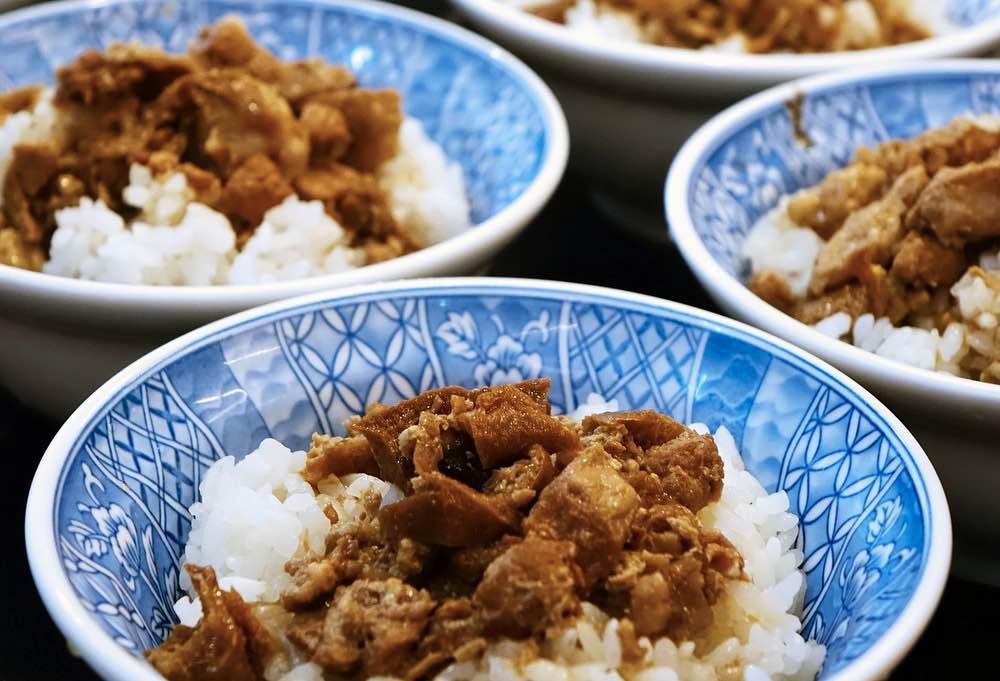
Taiwan has been called a ‘hog island’ and for good reason. In places like Pingtung County, the density of pig farms far exceeds that of anywhere in North America or Europe. Because local consumers prefer fresh to frozen meat, the sight of swine being trucked to market isn’t unusual. As recently as the late 1960s most countryside families in the countryside raised a pig or two as a sideline. Back then, more households owned swine than a car or a motorcycle; they ate or sold the meat and applied the manure to their fields. Until the late 1990s, Taiwan was the world’s no. 2 exporter of pork, behind Denmark but ahead of the United States.
In the old days, pigs were fattened on sweet potatoes plus whatever their human owners didn’t eat. That changed after the introduction of certain swine breeds from the US. But, to the delight of environmentalists, these days pigs aren’t fed only on imported feed. Household leftovers are a key part of Taiwan’s food economy. Two thirds of the island’s waste is collected and sent to hog farms as part of the regular rubbish-handling system.
 Since World War II, as Taiwan has industrialised and internationalised, people’s diets have changed markedly. Much less rice is eaten than before but the intake of bread, cakes and coffee has soared. Far more Taiwanese eat beef than used to be case. However, pork remains the carnivore’s staple; when a Taiwanese person talks about an unspecified meat, you can assume he or she means pork (for some reason, neither ham nor bacon are as common in Taiwan as in the West). Per capita pork consumption more than doubled between the 1950s and the 1980s. For every kg of beef or veal eaten in Taiwan, more than six kg of pork ends up in human stomachs.
Since World War II, as Taiwan has industrialised and internationalised, people’s diets have changed markedly. Much less rice is eaten than before but the intake of bread, cakes and coffee has soared. Far more Taiwanese eat beef than used to be case. However, pork remains the carnivore’s staple; when a Taiwanese person talks about an unspecified meat, you can assume he or she means pork (for some reason, neither ham nor bacon are as common in Taiwan as in the West). Per capita pork consumption more than doubled between the 1950s and the 1980s. For every kg of beef or veal eaten in Taiwan, more than six kg of pork ends up in human stomachs.
Pork is cooked and served in dozens of different ways. Large chunks of braised pork are a key ingredient of what many visitors call ‘Taiwanese hamburgers’ (guabao in Mandarin Chinese). What’s variously called braised meat on rice, diced pork gravy with rice, or minced pork and rice (rouzaofan; upper picture) is a lunchtime favourite of many workers. Japanese influence is evident in dishes like pork cutlet in breadcrumbs served with noodles. In indigenous communities, juicy slabs of mountain boar (shanzhu rou; lower picture) are a highlight of many barbeques.
If this talk of delicious food whets your appetite, think about making Taiwan part of your next overseas adventure.
Expertly-tailored Taiwan private tours
If this talk of delicious food whets your appetite, think about making Taiwan part of your next overseas adventure. At Life of Taiwan, we specialise in catering to the needs of English-speaking and European visitors. Join our luxury tours or family tours of Taiwan for an unforgettable journey through Taiwan. Contact us today to plan your perfect Taiwan private tour.
